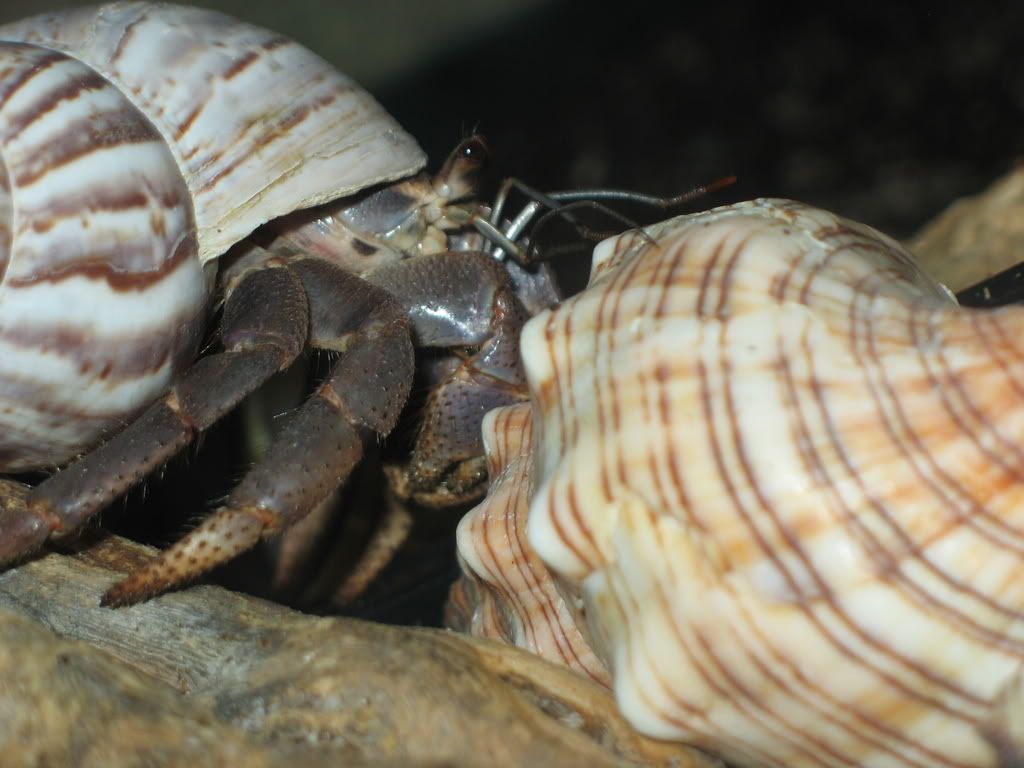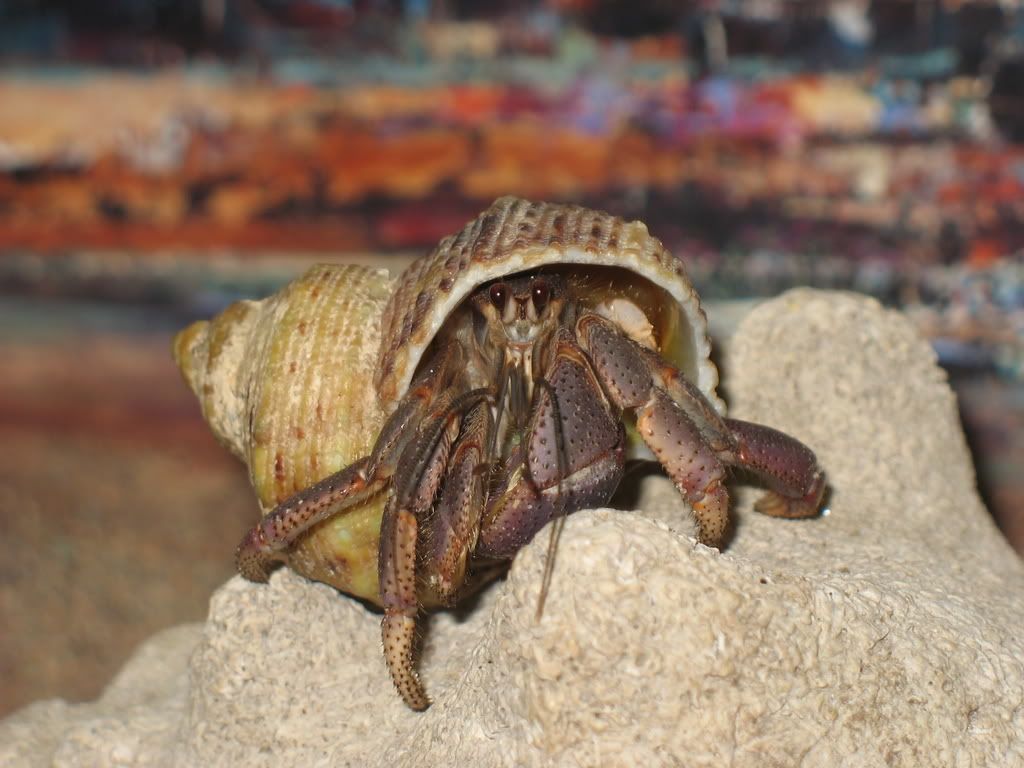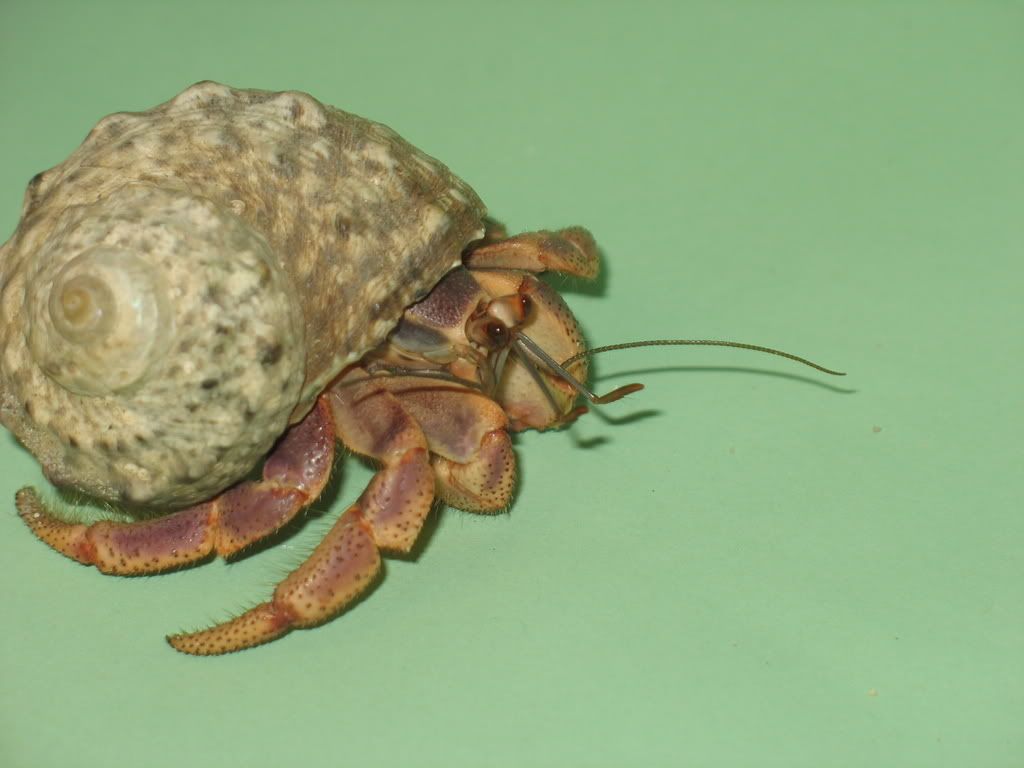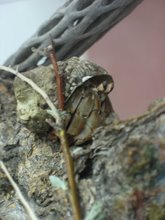Cattails (or Bulrush in Britain) Typha are well known as a plentiful survival food. The book Edible Native Plants of the Rocky Mountains by H.D. Harrington says “it has been called ‘an outdoor pantry’…no one should starve or even grow hungry in an area where cattails are abundant.” Humans can safely eat all parts of the plant including the tender young shoots, the flower, the rhizome, and the seeds. But can a hermit crab benefit from it as well?
Our trial begins with the leaf. I cut a 3” piece of leaf, dried it, and put it in the crab tank. It was ignored on the first several tries, but finally it sparked some interest. The leaf was re-hydrated by the moisture in the sand and the fibers were shredded from it as one might pull the fibers from a stalk of celery. I did not witness the encounter, but am relatively certain that the plant has no substantial toxic components. I hope to have more conclusive results in the future.
The pollen-laden flowers, located just above the velvety “tail,” are reported to be rich in protein so we began a trial on them as well. It appears that about half of the amount I had served had disappeared overnight and the remaining flowers had very little pollen left indicating that the pollen is indeed the richest and most desirable portion of the plant. The trial is still in its preliminary stages, but I wanted to post this now while our readers still have time to collect a bit this year and store them until the trial is complete.
Later in the fall the rhizome will be ready. It contains 30-46% starch. If I can work up the courage to wade into the smelly black swampy mud, I will gather some of this rootstock to be the subject of a future experiment.
The seeds and their down will also be the subject of another food trial.
Thursday, May 31, 2007
Subscribe to:
Post Comments (Atom)
























No comments:
Post a Comment